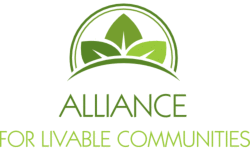
Anne Arundel
Regional Plans
The Citizen Advisory Committee has drafted nine Regional Planning Areas to facilitate more detailed planning that is a refinement of Plan2040, tailored to the diverse parts of the County. These areas are shown in the map at the right and can be viewed in a more detailed interactive map here.
The Regional Planning Process
An overview of the Regional Planning process is available at the County website. Each Region Planning Area is proposed to have a Planning Committee of 9 to 15 members, representing a broad cross section of stakeholders It is expected that work on the Regional Plans will begin shortly after the adoption of Plan2040 by the County Council.
Each Regional Plan will address a full set of planning elements, including
-
Region Planning Area Vision and Goals
-
Community characteristics and special features
-
Natural Features
-
Land Use
-
Cultural and Historic Resources
-
Housing
-
Transportation and Mobility
-
Community Facilities
-
Public Safety
-
Strategies
-
Implementation Plan and Monitoring
-
Any additional content to address elements specific to a region, such as agriculture, sea-level rise, transit-oriented development, redevelopment, revitalization, etc.
Most local rezoning issues will be addressed by the Regional Plans.

Rezoning
Rezoning is one of the most powerful tools for implementing the GDP. Rezoning in the Regional Areas will be guided by the land use maps and policies contained in the GDP, but will be strongly influenced by local citizen desires.
The County Code specifies categories of zoning from residential, mixed use, commercial, maritime and industrial.
Residential districts are:
-
RA-Rural Agricultural
-
RLD–Low density residential
-
R-1, R-2, R-5, R-10, R-15 and R22 which go from a density of 1 dwelling per acre (R-1) to R22 (apartments) with 22 dwellings per acre.
Not all rezonings are part of the GDP rezoning process. The Department of Planning and Zoning receives and reviews requests for piecemeal rezonings. Typically these are requests for higher densities than currently allowed or “upzoning” and are inconsistent with the GDP.
It is important for citizens to oppose rezoning of land that fails to comply with the GDP.
How Community Groups and Citizens Can Engage
You can make a difference by tracking and engaging in the GDP process. Let your elected officials know your views, participate in public meetings and surveys, write letters to the newspapers and attend hearings.